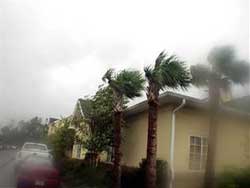As the Earth warms and the climate becomes more extreme, vast regions will face heavier rainfall and snowfall, accompanied by intense storms, according to a new study.  “Models indicate that most areas around the world will experience more rainfall in each storm during this century,” said lead researcher Gerald Meehl from the National Center for Atmospheric Research in the United States.
“Models indicate that most areas around the world will experience more rainfall in each storm during this century,” said lead researcher Gerald Meehl from the National Center for Atmospheric Research in the United States.
Rainfall and snowfall are expected to increase by an average of about 10-20%, Meehl noted. The strongest storms are likely to occur most frequently in late fall, winter, and early spring. This increase in precipitation will happen over land in tropical regions, where the atmosphere is warming the fastest.
Based on computer models, Meehl and colleagues predict that regions at higher risk of experiencing stronger storms are those where large masses of moist air converge. These areas include the Northwest and Northeast of North America, Northern Europe, Northern Asia, the East Asian coastline, Southwest Australia, and the central southern region of South America.
The reason for the increase in strong storms is that as the Earth warms, the temperatures of the atmosphere and ocean surface rise, leading to increased evaporation and greater moisture accumulation in the air. When this saturated air mass moves from the ocean inland, the resulting storms will carry more rain (and snow).
Alongside some regions facing stronger storms, other areas will be at risk of drought during the hot months, the study concludes. “As the climate becomes hotter, we will increasingly feel these phenomena more clearly and intensely,” Meehl stated.
Recent independent studies have also found that tropical storms are becoming more aggressive—despite a decrease in their frequency—potentially due to rising sea surface temperatures. In another study, Jeffrey Yin from the National Center for Atmospheric Research used climate models to show that widespread snow and rain storms (also known as frontal storms) are gradually moving towards the poles, a product of the greenhouse effect.
Meehl’s research suggests that our planet will continue to see an increase in rainfall over the next few decades, regardless of any human interventions.
“Even if you could stabilize the greenhouse gas levels in the atmosphere at current levels, the system already has a certain thermal inertia, and it will take several more decades to stabilize it,” he said.
This analysis aligns with previous studies that indicated there would be no way to prevent global warming during this century.
T. An (according to LiveScience)




















































